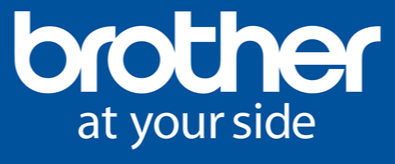Glossary
List of sewing machine specific terms
| Term | Description |
|---|---|
| Ballpoint needle | Ballpoint needles are specifically designed for use with knitted fabirc. Because of the rounded tip, the needle will not pierce the fabric which damages knitted fabric. Read more on sewing machine needles |
| Bobbin | A small spool which holds the lower thread in the machine. There are various types of bobbins, so make sure that you use the correct one for your machine. Read more |
| Bobbin case | Many sewing machines have a small metal enclosure in which the bobbin is inserted into. The bobbin case holds the bobbin in place, and applies the correct tension to the lower thread. Read more |
| Feed dog | Under the presser foot there are is a metal part with small teeth. The feed dog feeds the material though the machine as it stitches. The feed dog moves up and down in sync with the needle so not to feed while the needle is in the down position. |
| Foot control | Most modern sewing machines have an electronic foot control which controls the motor speed. This acts as an 'accelerator pedal' for the sewing machine. |
| Hand wheel | Normally sewing machines have a hand wheel on the side of the machine. This allows the user to slowly advance the machine manually by hand |
| Hook | The hook, or rotary hook, is a hook at the bottom of the sewing machine which catches the lower thread to form a lockstich. Read more |
| Looper | Overlockers use loopers which create loops in the thread. Loopers create loops in the thread that pass from the needle thread to the edge of the fabric so that the edge of the fabric are contained within the seam. Read more |
| Needle bar | The needle bar is a vertical bar that the needle is clamped to. The bar move up and down to push the needle through the fabric as the machine is sewing. |
| Overlocker | Often also called a serger in the US, an overlocker creatse a stitch over the edge of fabric. This keepds the fabric from fraying. An overlocker normally cuts the edge of the fabric prior to stitching to ensure that the stitching is right on the edge of the fabric. Read more |
| Pinion gear | Many sewing machines have pinion gears which drives the hook or shuttle. On older machines this gear wears out or breaks, and needs replacing. If your machines hand wheel is stuck, it could be due to this gear that needs replacing. |
| Presser foot | Sewing machines and iverlockers have a presser foot which presses the fabric down so that it can be fed through automatically by the feed dogs. There are various shapes and sizes of presser doors for various situations and uses. |
| Running on / Sewing Machine running by itself | The sewing machine is running by itself without the user pressing on the foot control. This is quite a common problem and explained on our FAQs page. You can read about it here. |
| Take-up lever | This is the part of the machine that goes "up and down". The take-up lever is located above the presser foot of a sewing machine. Its designed to pull the thread from the spool to feed it through the machine. It will also lift the thread back up out of the cloth after a stitch is completed. |
| Tension | Each thread of a sewing machine has to have the correct tension applied. Normally the upper through goes through tensioner discs which can be adjusted using a dial. The lower thread tension is normally taken care of by the bobbin case. To get well balanced stitches, correct tension is essential. The tension may need to be adjusted when sewing various kinds of fabric. |
| Throat plate | Sometimes called a needle plate. The throat plate is a plate where the needle can pass through. The bottom thread passes through the throat plate, as well as the feed dog. The needle hole needs to be very smooth or else thread will hang up or get caught on it which will lead to problems like breaking thread, or incorrect stitch balance. |


